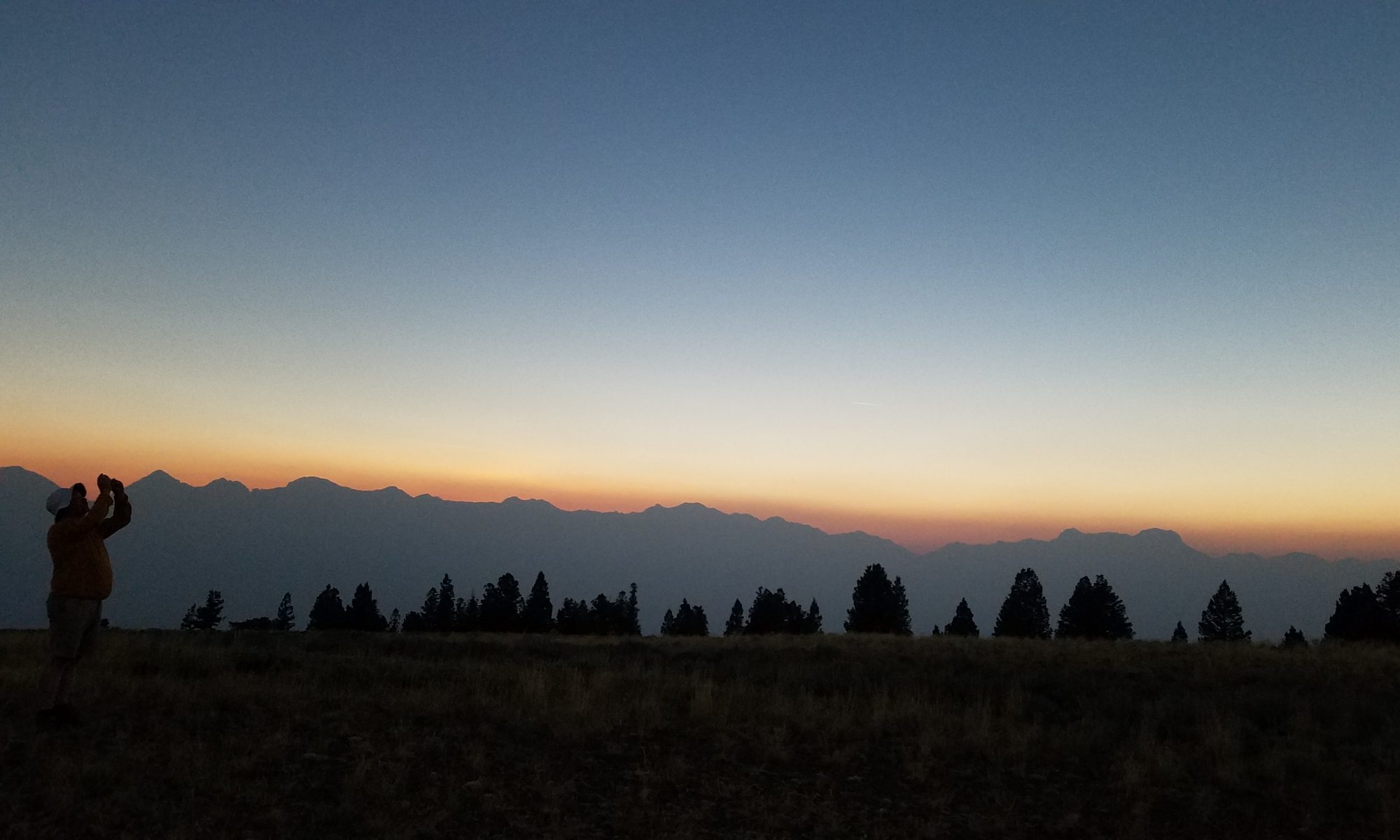Before Christmas, I was working with four schools in County Mayo, Ireland, and challenging the students to use MakeCode to make a Microbit lighthouse showing the actual sequence of flashing lights that the lighthouses round Mayo use.
Tomorrow all four schools are gathering in Atlantic Technological University in Castlebar, county town of Mayo, to show off their work with artist Bryan Duffy and their digital skills combined.
My rôle will be to extend those digital skills, and I intend to do that by introducing Morse code:
- You are on a small boat out to sea
- Your engines have failed and the waves are getting bigger all the time
- You can see the lighthouses and you want to send a message using the only technology you have left – a powerful torch
- How do you say ‘help’?
We are working in four groups of students in rotation, mixed from each school.
I will start by introducing Morse code and asking them to simulate the torch just by raising and lowering their hand – can they send messages? can they read them?
Then we will move to coding the Microbit in MakeCode, imagining it to be the torch and automate the sending of a distress signal.
Finally we will write our own message to be sent from the Microbit and challenge the other groups of students to decode afterwards.
Here are the two sheets that will support the workshop:
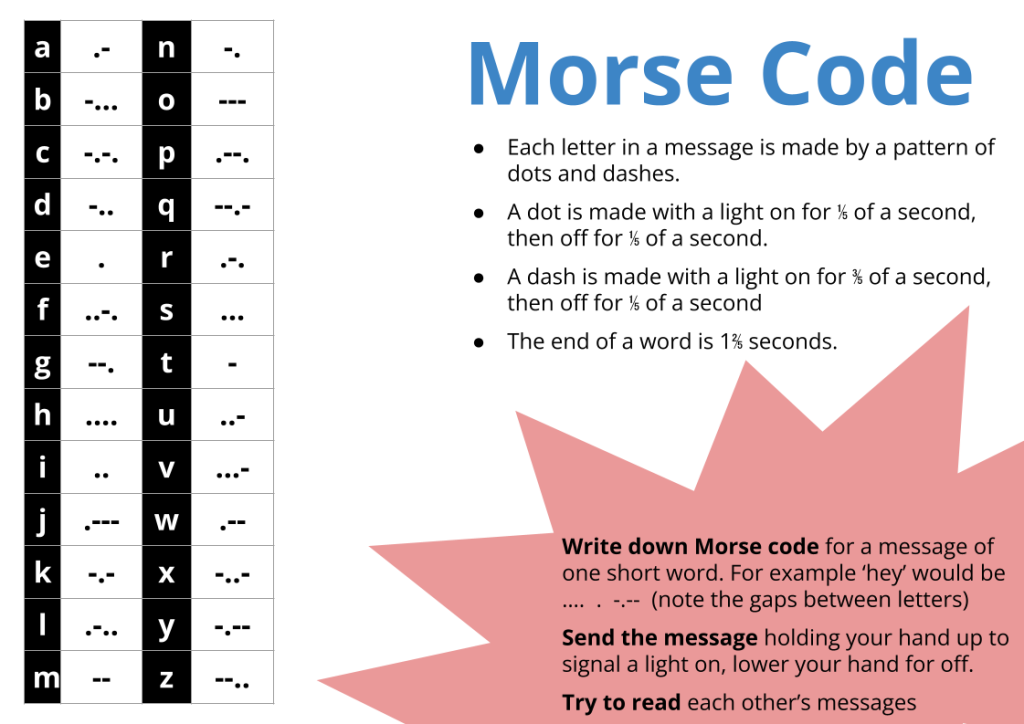
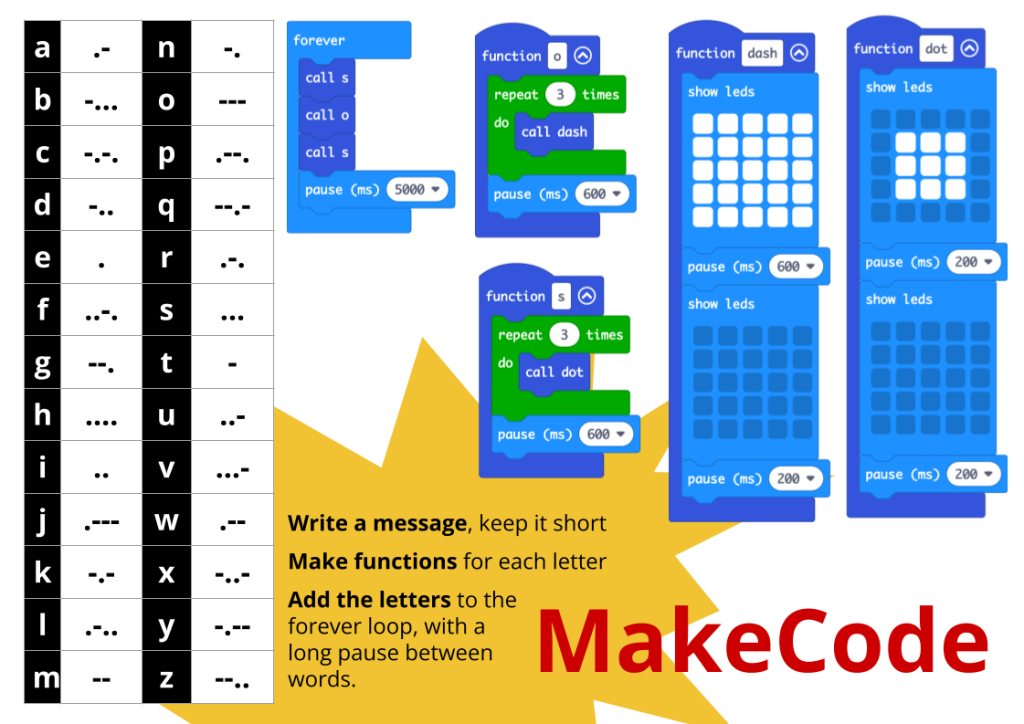
I’ll update this blog after the workshop and tell you how it went!
Update:
Well it was a great day.
I left the house in Essex at 5am to fly to Knock West of Ireland from Stansted and collect a hybrid hire car from the redoubtable Pauline on my way to Castlebar.
We set up in a lovely hall in Atlantic Technological University, with ample space to spread out for our four group workshop rotation day.
The Morse code MakeCode workshop went well, despite the difficulty of talking in a noisy space – ironic given the topic of using morse code to communicate!
Students were inventive and quick with sorting out how Morse code worked, planning messages and then sending them across the hall with arm movements for dots and dashes in the absence of torches.
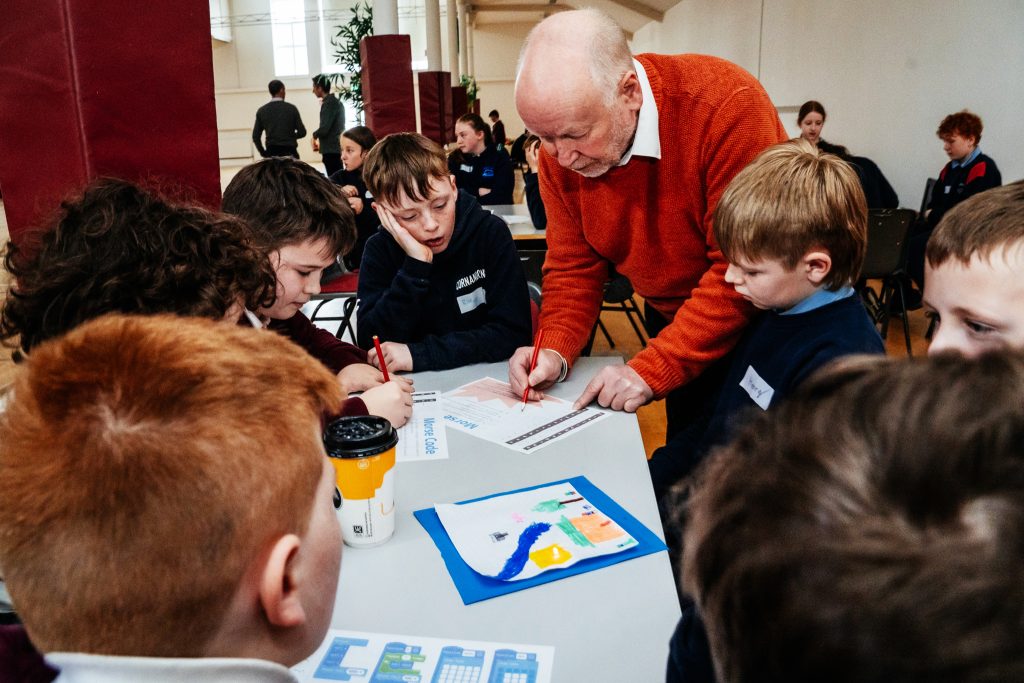
Having acquainted themselves clearly with the concept of Morse code, the students then went on to use laptops, programming in Makecode to automate the sending of an SOS distress signal.
It gave me a chance to introduce them to sub-programs in Makecode as a way of structuring the work. Some were too enthusiastic to read my notes and coded it in a linear way, with a long ‘tower’ of jigsaw pieces. They quickly saw how much tidier and easy to adapt it was by using functions, which they readily understood.
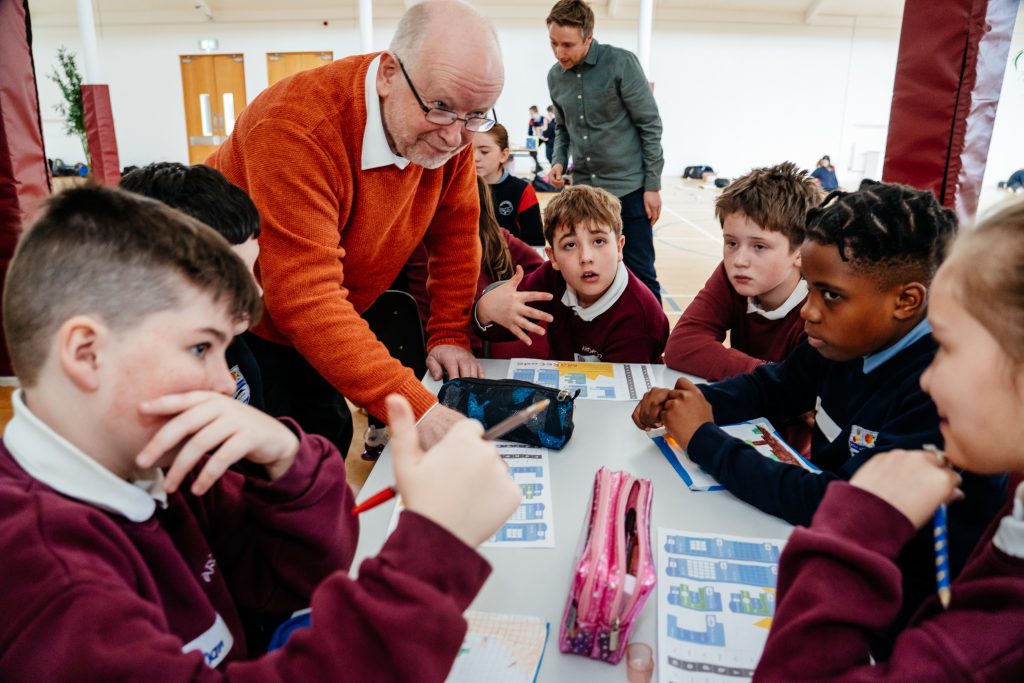
As the day progressed, the tower of decorated cubes, one made by each student in the four schools, was assembled on stage, directed by artist Bryan Duffy.
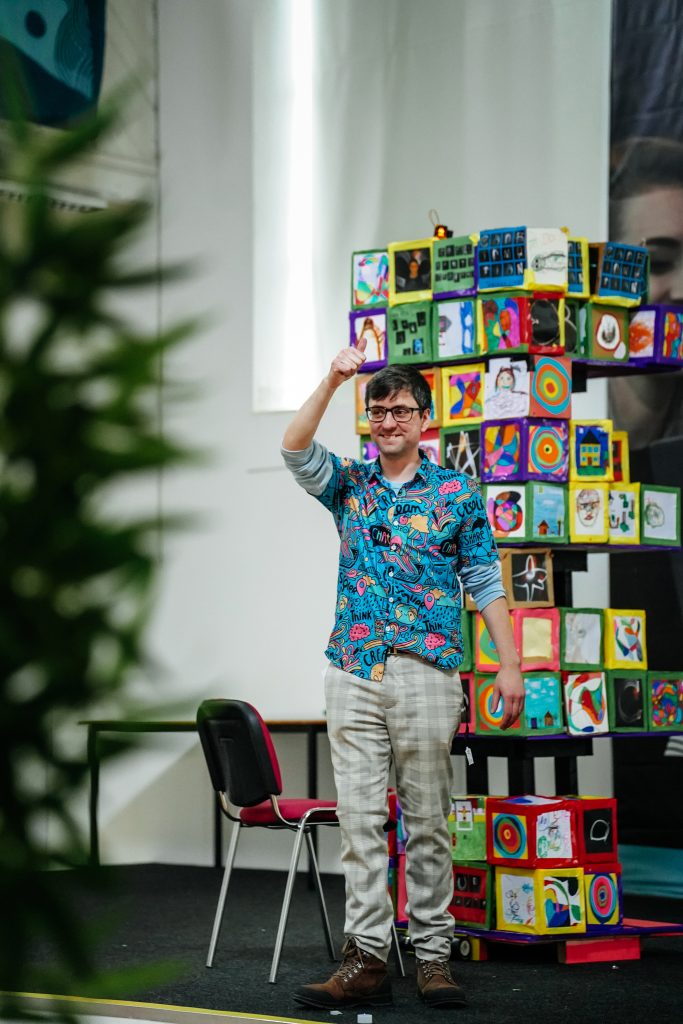
We placed one microbit at the top of the lighthouse tower, broadcasting a secret message to everyone:
One teacher and three students managed to work out what it was broadcasting – can you?
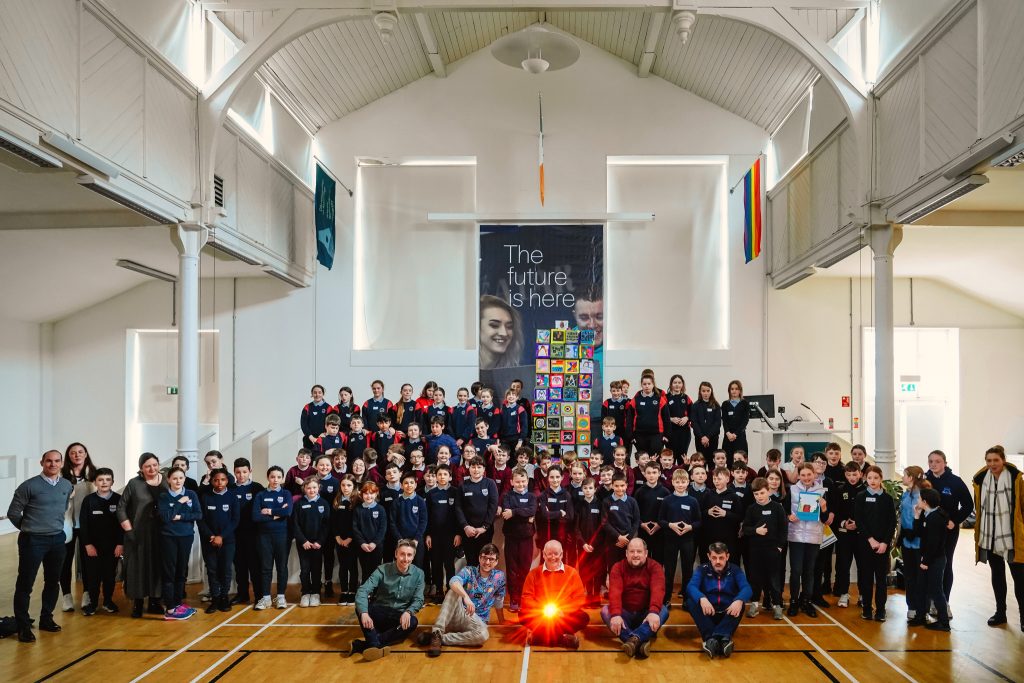
All-in-all a very satisfying day as we re-assembled the tower in the Mayo Education Centre next door, where the staff happily decoded the message, with some coaching!
Many thanks to the four principals – Adrian Ormsby at the Clogher School, Dermot Walsh at Cornanool School, Farnan Harte at Ardagh School, Kevin Munnelly at the Quay School – for trusting me with their students. A pleasure working with Bryan Duffy – a powerhouse. Most of all, a privilege to be working with the almost 100 students who worked tirelessly, noisily, enthusiastically, politely and generously.
